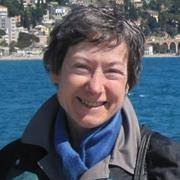Graziella Branduardi-Raymont
10 November 2023
Staff, students and friends of MSSL have paid tributes to Professor Graziella Branduardi-Raymont, who passed away on 3rd November after several weeks in hospital.

After obtaining her PhD in X-ray astronomy in 1977, Graziella moved to the Harvard Smithsonian Centre for Astrophysics in the US to work on data coming from NASA’s revolutionary new Einstein Observatory, which was the first X-ray astronomy satellite to carry imaging X-ray optics. During this time, Graziella moved into X-ray studies of active galactic nuclei and clusters of galaxies. Notably, the first high-resolution X-ray image of the Perseus cluster of galaxies from Einstein was published in a paper led by Graziella.
Graziella returned to MSSL as a Research Assistant in 1979, and remained here for the rest of her career. Graziella was appointed as a Lecturer in 1987, Reader in 1992, and Professor in Space Astronomy in 2009.
Graziella's mission involvements included ESA’s first X-ray observatory, Exosat, the German-UK-US observatory, Rosat and ESA’s XMM-Newton. On XMM-Newton, Graziella led the team developing the onboard digital electronics and onboard software for the Reflection Grating Spectrometer. Graziella’s passion for X-ray spectroscopy lasted for her entire career. Graziella organised a series of high-resolution X-ray spectroscopy workshops at MSSL, and on ESA’s ATHENA observatory Graziella was a member of the high-resolution spectroscopic XIFU instrument, for many years the only UK member of the XIFU consortium.
Graziella was unflinchingly dedicated as a teacher, lecturing undergraduate and postgraduate courses in space science and astronomy at UCL for more than three decades. Graziella supervised dozens of PhD students during her time at MSSL and was held in extremely high regard as a supervisor. Graziella also carried the organisational responsibility for MSSL’s Space Science and Engineering Masters degree from 2009 to 2016. Graziella continued as Chair of the Space Science and Engineering Board of Examiners until her death.
Later in her career Graziella developed a strong interest in the X-ray emission from planets in the solar system, becoming the world’s foremost expert on the X-ray emission from Jupiter, especially its aurora. This made her one of a few scientists worldwide who excel in both astrophysics and solar system science. From this, Graziella became interested in observing the X-ray emission of the Earth’s magnetosphere. Frustrated that it was not possible to observe this phenomenon with XMM-Newton, Graziella began to propose dedicated space missions to study X-ray emission from the Earth’s magnetosphere, culminating in the adoption by ESA and the Chinese Space Agency of the SMILE mission, which she led together with Professor Chi Wang of the National Space Science Center, Chinese Academy of Sciences. SMILE is due to launch in 2025, a fitting symbol of Graziella's extraordinary contribution to X-ray astronomy and space science.
Throughout her career, Graziella was passionate about involving women in science, and was a role model for many. She was one of the administrators of the Physics and Astronomy Department’s Elizabeth Spreadbury Fund for many decades, most recently serving as the chair. She also was a true physicist, who cared for and encouraged all her students. She often began her questions to research colleagues and students with ‘I have a naïve question’ – far from naïve, these were always important and perceptive, and improved understanding for all. Graziella was a lovely person, exceptionally kind, thoughtful and gracious with great integrity. She always knew the right thing to do and say in many situations.
Graziella passed away on the 3rd November after several weeks in hospital. Just a few days earlier she had expressed her desire to get back to her academic duties as soon as possible. She is sorely missed by her friends and colleagues at MSSL and around the globe.
 Close
Close

